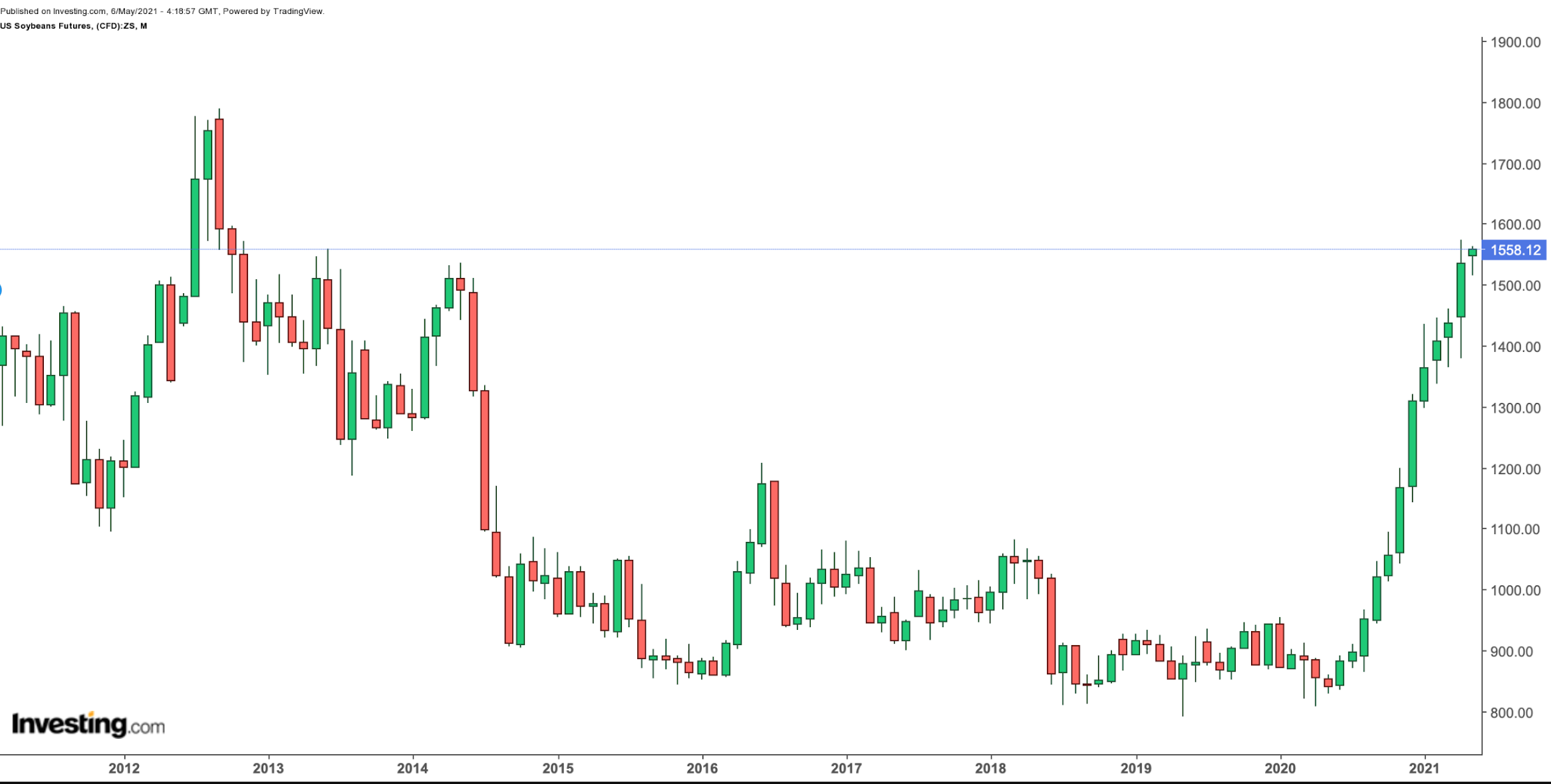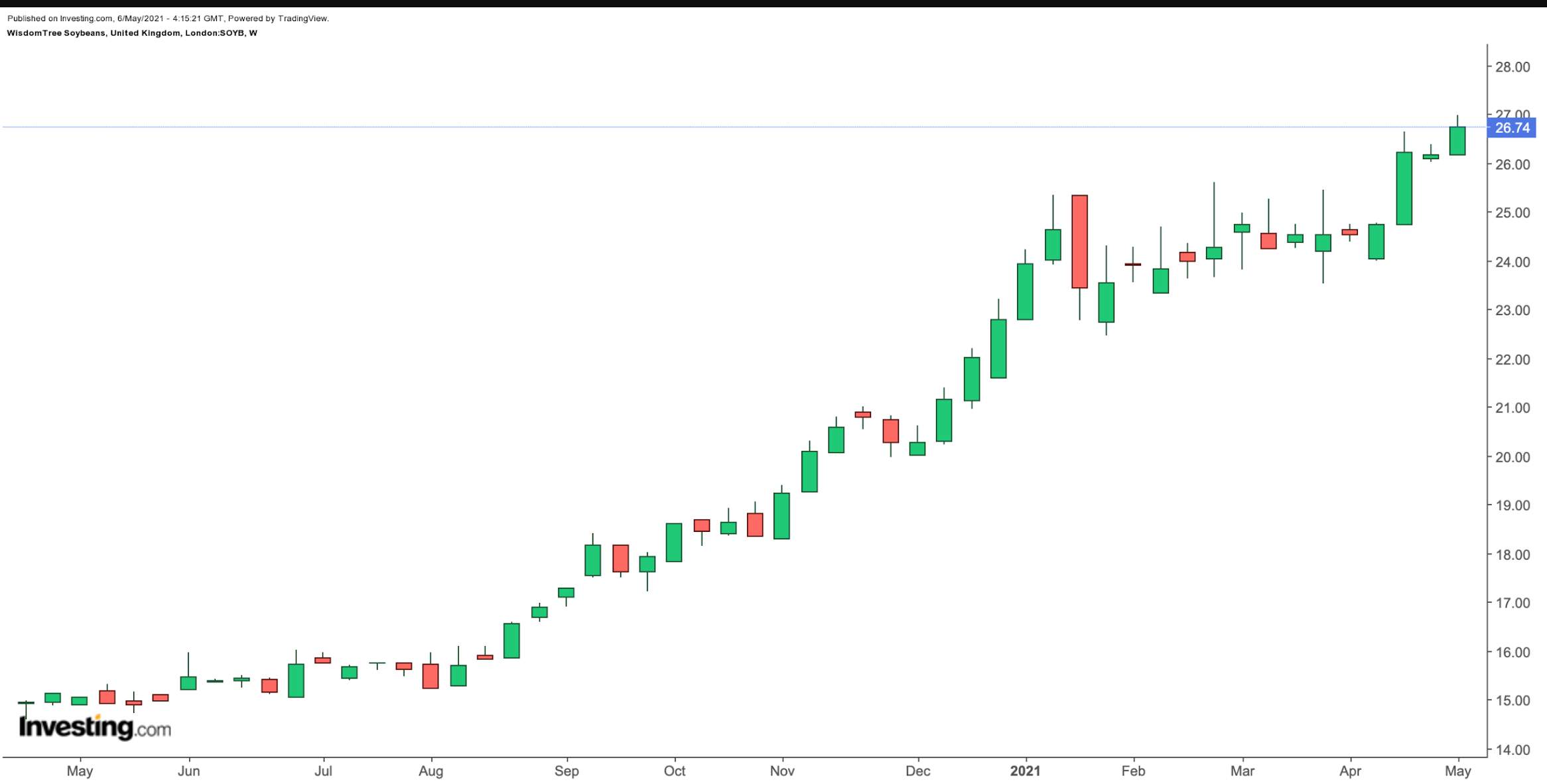There are several thematic exchange-traded funds (ETFs) for investing in agricultural commodities. And we have previously discussed a few (here, here and here). Now, as soybean prices are at multi-year highs, let’s extend the discussion to another agricultural fund that focuses on this commodity.

Soybean is an oilseed crop. About 85% of soybeans cultivated are used as animal feed. The rest is used for direct human consumption.
When the oilseed is crushed, the result is soybean meal and soybean oil. Archer-Daniels-Midland (NYSE:ADM) and Bunge (NYSE:BG) are among the leading names that process soybeans.
According to the US Department of Agriculture (USDA):
"Processed soybeans are the world's largest source of animal protein feed and the second largest source of vegetable oil. The United States is the world's leading soybean producer and the second-leading exporter."
The top exporter of soybeans is Brazil. On the other side of the equation is China, the world’s most populous nation. It is the largest soybean importer worldwide. Around 60% of the US agricultural produce exports to China are soybeans.
Otsuka Pharmaceutical, which is part of Japanese Otsuka Holdings (OTC:OTSKY), highlights:
"The world's biggest soybean producer, the US, produces about 73 million tons per year. Its population, however, only consumes on average about 40 grams of soy per person per year. This is less than the amount eaten in one day by the average person in Japan."
In other words, the Western diet does not use soybeans as much as Japan or China, the country that primarily affects the demand and hence the price of soybeans. China is also seeing a strong hog herd recovery from the swine fever epidemic that affected previous quarters. As a result, the nation has an increased demand for soybean meal-based animal feed.
Before agricultural ETFs became widely available, investors would typically trade derivative contracts on soybeans at futures and options exchanges, such as the CME Group. ETFs have introduced a new (and potentially easier) way to invest in such commodities.
Many financial planners point out that commodity investment can help diversify traditional stock and bond portfolios. With that information, here's our fund that could appeal to a range of investors.
Teucrium Soybean Fund
- Current Price: $23.37
- 52-Week Range: $13.38 - $23.39
- Expense Ratio: 2.34% per year
The Teucrium Soybean (NYSE:SOYB) gives investors exposure to soybean futures contracts without the need to open a futures trading account. The fund started trading in September 2011, and assets under management are around $93 million.

SOYB tracks the performance of three soybean futures contracts (with different expiration dates) that are traded on the Chicago Board of Trade. In other words, it does not track the spot price of soybeans.
So far in 2021, SOYB is up close to 20% and hovering at multi-year highs. Soybean bulls might want to put the fund on their radar and consider buying the dips. However, they also need to remember that the fund has a high expense ratio.
Finally, whenever we cover commodity-based ETFs that are based on futures contracts, we remind readers that investment in futures contracts (even through funds) can be volatile.
Farmers and agricultural firms use futures markets to hedge their risks. Therefore, these markets have an important purpose. However, each commodity also has unique trading characteristics as well as supply and demand properties. Therefore, prior to investing, individuals would need to do proper due diligence.
Several concepts, such as “rolling-over,” “contango” and “backwardation,” which we have discussed before, are important for appreciating how futures contracts usually behave. Futures traders regularly roll from one futures contract to another. Otherwise, they could be subject to physical delivery of the commodity. This rolling over creates either a positive (in backwardation markets) or negative (in contango markets) roll yield.
In simple terms, backwardation typically means demand exceeds supply, i.e., markets want the produce now. So when the soybean market is in backwardation, farmers would want to sell their produce today as opposed to a future date. They do not have an incentive to store soybeans to sell in the future.
Bloomberg recently reported that commodities, including soybeans, are in steep backwardation. Therefore, the current demand might continue to push up prices. However, potential investors would need to keep a close eye on the balance between global supply and demand.
